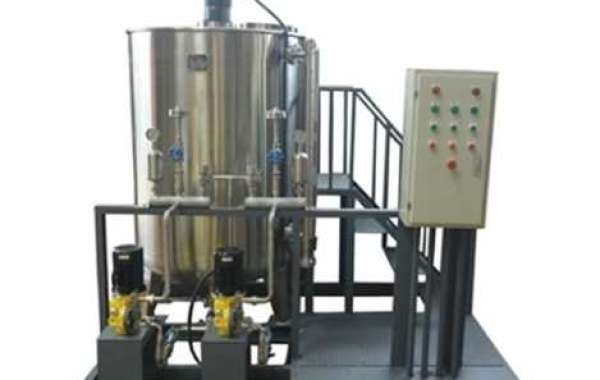Defining Automatic Dosing Systems
Automatic Dosing Systems are sophisticated setups designed to accurately and automatically dispense precise amounts of liquids, chemicals, or substances into a process or system. These systems are employed in diverse sectors, including manufacturing, agriculture, water treatment, healthcare, and more. At the core of these systems lies a combination of hardware and software, working in tandem to ensure a seamless and efficient dosing process.
Key Components of Automatic Dosing Systems
- Dosing Pump: The heart of the system is the dosing pump, a device that controls the flow rate of the chemical or treatment agent. Different dosing pumps, such as peristaltic pumps, diaphragm pumps, or piston pumps, may be used depending on the application.
- Storage Tanks: Chemicals are stored in dedicated tanks, often equipped with level sensors to monitor the quantity of the chemical in real-time.
- Control Panel: The control panel manages and oversees the operation of the dosing system, allowing for precise programming, monitoring, and adjustments.
- Sensors and Monitoring Equipment: These systems may incorporate various sensors, such as pH sensors or turbidity sensors, to provide real-time data that influences dosing rates.
- Safety Features: Many systems include safety measures to prevent overdosing, leaks, or other potential hazards.

Applications in Various Industries
Automatic Dosing Systems find applications in a diverse range of industries
- Water Treatment: They are used to precisely add chemicals for disinfection, pH control, and coagulation in drinking water and wastewater treatment.
- Agriculture: In agriculture, these systems ensure accurate and efficient fertilization and pest control, leading to higher crop yields and reduced resource wastage.
- Manufacturing: They are employed in manufacturing processes to dose chemicals, colorants, and additives in various products, ensuring consistency and quality.
- Healthcare: In the medical field, these systems are used for the precise dosing of medications and solutions in hospitals and clinics.
- Food and Beverage Industry: Automatic Dosing Systems help control the addition of ingredients in food processing, ensuring consistent product quality.
Advantages of Automatic Dosing Systems
- Precision: These systems offer a high level of precision, ensuring the accurate dosing of substances, which is critical in many applications.
- Efficiency: Automation reduces the margin of error and minimizes waste, making processes more efficient and cost-effective.
- Consistency: The reliability of automatic dosing systems guarantees that processes remain consistent over time, which is essential in manufacturing, water treatment, and many other industries.
- Safety: Automation reduces human contact with potentially hazardous substances, enhancing safety in various applications.
- Environmental Benefits: Reduced waste and more accurate dosing lead to reduced environmental impact.
Conclusion
Automatic Dosing Systems represent a paradigm shift in the way substances are accurately and efficiently dosed across various industries. Their precision, efficiency, and ability to reduce waste make them invaluable tools in modern industrial and commercial processes. As technology continues to advance, these systems are expected to play an increasingly vital role in ensuring the quality and reliability of products and services in a wide range of sectors.








